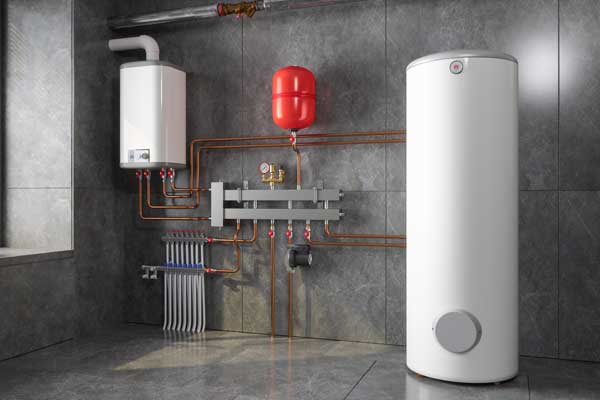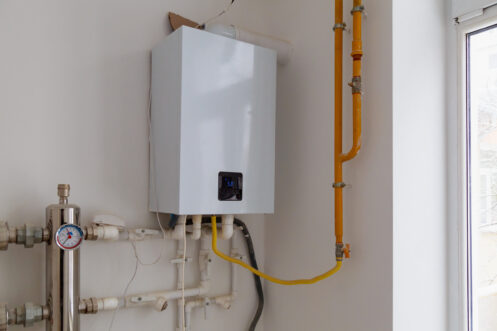Every person may have their own unique piece of advice in relation to Tips on Maintaining a Water Heater.

Warm water is crucial for day-to-day comfort, whether it's for a refreshing shower or washing dishes. To guarantee your hot water system runs successfully and lasts much longer, regular maintenance is key. This short article supplies useful tips and insights on just how to keep your home's warm water system to stay clear of disturbances and pricey repair services.
Intro
Keeping your home's warm water system could appear overwhelming, however with a couple of basic steps, you can ensure it operates smoothly for years to come. This guide covers everything from understanding your warm water system to do it yourself upkeep pointers and recognizing when to call specialist aid.
Value of Preserving Your Hot Water System
Regular maintenance not only expands the life expectancy of your hot water system but also guarantees it runs effectively. Overlooking maintenance can lead to decreased effectiveness, higher energy bills, and also early failing of the system.
Indications Your Hot Water System Needs Maintenance
Understanding when your hot water system requires interest can prevent significant issues. Keep an eye out for indications such as inconsistent water temperature level, weird noises from the heater, or rustic water.
Flushing the Hot Water Heater
Flushing your water heater gets rid of sediment build-up, enhancing efficiency and extending its life.
Checking and Changing Anode Rods
Anode rods stop corrosion inside the storage tank. Inspecting and changing them when worn out is vital.
Complex Concerns Requiring Expert Help
Instances consist of major leakages, electrical troubles, or if your water heater is constantly underperforming.
Routine Expert Upkeep Benefits
Professional upkeep can consist of thorough assessments, tune-ups, and ensuring conformity with safety criteria.
Examining and Readjusting Temperature Setups
Changing the temperature level setups ensures ideal efficiency and safety.
DIY Tips for Upkeep
You can perform a number of upkeep tasks on your own to keep your warm water system in top problem.
Checking for Leaks
Regularly check pipes and connections for leaks, as these can cause water damages and higher bills.
Comprehending Your Hot Water System
Prior to diving right into upkeep jobs, it's helpful to comprehend the standard components of your warm water system. Typically, this includes the hot water heater itself, pipes, anode rods, and temperature controls.
Regular Monthly Upkeep Tasks
Normal month-to-month checks can help catch minor problems prior to they intensify.
Examining Stress Alleviation Valves
Examining the stress relief valve ensures it functions correctly and avoids extreme stress accumulation.
Protecting Pipelines
Shielding warm water pipelines lowers warmth loss and can conserve power.
When to Call a Specialist
While do it yourself upkeep is beneficial, some issues need specialist proficiency.
Final thought
Routine upkeep of your home's warm water system is essential for efficiency, longevity, and expense financial savings. By adhering to these pointers and understanding when to seek expert aid, you can make certain a trusted supply of warm water without unexpected disruptions.
How to Maintain an Instant Hot Water Heater
Before tinkering with your hot water heater, make sure that it’s not powered on. You also have to turn off the main circuit breaker and shut off the main gas line to prevent accidents. Also turn off the water valves connected to your unit to prevent water from flowing into and out of the appliance. 2. When you’re done, you have to detach the purge valves’ caps. These look like the letter “T” and are situated on either side of the water valves. Doing so will release any pressure that has accumulated inside the valves while at the same time avoid hot water from shooting out and burning your skin. 3. When the purge valves’ caps are removed, you have to connect your hosing lines to the valves. Your unit should have come with three hoses but if it didn’t, you can purchase these things from any hardware or home repair shops. You can also get them from retail stores that sell water heating systems. Read the user’s manual and follow it to complete this task properly. When the hosing lines are connected, open the purge port’s valves. 4. You should never use harsh chemical cleaners or solutions when cleaning your unit. Make use of white vinegar instead. It should be undiluted and you’ll probably use about 2 gallons. 5. Now flush your water heater. This task should probably take about 40 minutes. We can’t give you specific directions for this because the procedure is carried out depending on the type, model and brand of your heater. With that being said, refer to the user’s manual. 6. When you’re done draining the unit, you have to turn off the purge port valves again. Remove the hosing lines that you earlier installed on each of the water valves. Put the valve caps (purge port) back in their respective places and be very careful so as not to damage the rubber discs that are found inside these caps. 7. Now that everything’s back in place, check your user’s manual again to find out how to reactivate your water heating system. 8. Once it is working, turn one of your hot water faucets on just to let air pass through the heater’s water supply pipes. Leave the tap on until water flows smoothly out of it. https://www.orrplumbing.com/blog/2014/september/how-to-maintain-an-instant-hot-water-heater/

I recently found that blog post on How to Maintain Your Water Heater & Prolong its Life when doing a lookup on the internet. Loved our blog? Please share it. Help another person find it. Thanks a lot for being here. Don't hesitate to visit our blog back soon.
Click Here